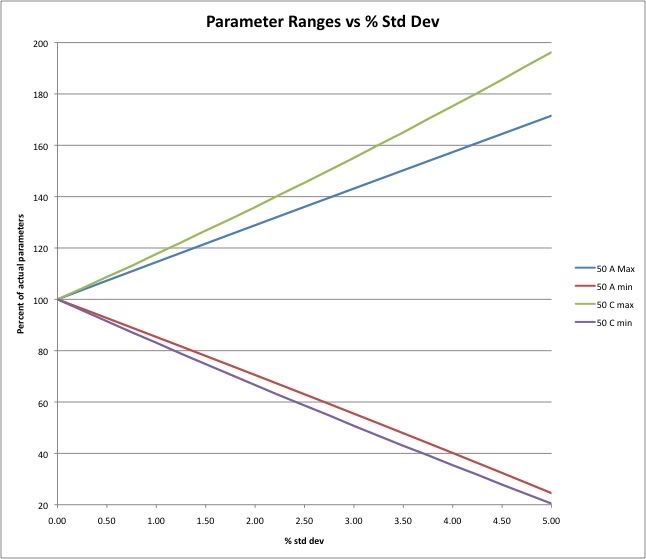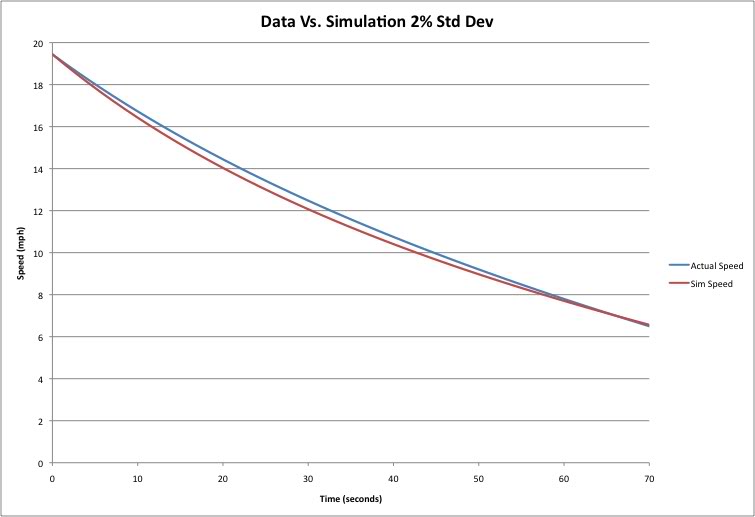To test the range of values parameters could assume and still be within a given amount of error, I first generated some test data to high precision with my simulator. That means the data points had no error, so I could then add it in systematically. Since I thought percentage errors mattered more than absolute ones, I settled on the standard deviation of the percentage error at each data point as my sampling error. I generated the following graph with 50 data points.

You can see the parameters can vary all over the place with quite small errors in the recorded data. At a standard deviation of only 2%, Cd can vary between 66% and 135% of its actual value! The number of data points collected has surprisingly little effect on this result. As a double check, I generated simulation data using a Cd that was 135% higher than the true value and a Crr that was only at 75%.

These curves differ within a range of error that could very reasonably be encountered under the sorts of conditions I would be testing under. I could attempt to take data from many runs to try and account for random errors, but even small systematic errors would bias the whole procedure. I could also use my knowledge of Cd for my car (.31) to narrow the range of parameter spread, but that somewhat defeats the original purpose I had in mind, since I was hoping to gather independent data with accuracy in absolute terms in order to try and determine why my vehicle coasts poorly. Since the coasting difference isn't severe, I think realistically that the level of investment I'd have to make in accurate data logging equipment, gathering more data, and possibly a better test track would be too high in terms of both time and money. Idle curiosity only can go so far! At least I didn't buy an inclinometer already and this project was rather fun. Gave me an excuse to buy a GPS as well!

If all you want are relative measures you could get a rough idea of the change, but, at least for me, at that point I'd just track the mpg statistics since I do that already. I'll just start making changes (like switching to a lighter weight gear oil perhaps) to try and improve my coasting performance.
If anyone wants the code I used to fit the data and generate simulations, send me a private message and I'll clean it up (add more comments and such). It's written in C++, but is a purely functional program. It's quite fast and eliminates some fitting errors that would matter even for relative testing.